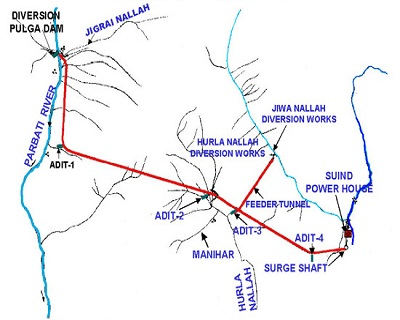




Disclaimer: Copyright infringement not intended.
Indian 7,500 km coastline is facing ecological & socio-economic challenges due to continued practice of light fishing which is banned in EEZ but remains prevalent in several states.
Light fishing involves using high powered artificial lights to attract fish & squid to surface making them easier to catch.
It is commonly used for catching small pelagic fish (sardines, anchovies & mackerel) & squid.
2017 Light fishing was banned in Indian Exclusive Economic Zone (EEZ) to curb ecological damage & overfishing.
State-Level Loopholes Some states (Maharashtra, Tamil Nadu, Andhra Pradesh) have partial or no bans on light fishing in territorial waters.
Weak Enforcement Despite ban illegal light fishing continues due to limited monitoring & weak penalties.
Overfishing Attracts excessive fish including juveniles leading to rapid depletion of fish stocks.
Disrupts Marine Food Chain Removal of large quantities of fish & squid affects survival of predator species.
Juvenile Fish Depletion Light fishing leads to premature fish catch harming population regeneration.
Coral Reef Damage Overfishing around reefs affects biodiversity & ecosystem balance.
Conflict Between Traditional & Mechanized Fishers Small scale fishers using traditional methods face declining catches due to competition from mechanized boats using high powered lights.
Economic Losses for Small Fishers Traditional fishers who depend on sustainable fishing practices struggle to compete with industrial trawlers.
Rise in Fishmeal Industry Demand Juvenile fish caught through light fishing are often diverted to fishmeal industry fueling practice further.
|
State |
Ban Status |
Enforcement Challenges |
|
Gujarat |
Recently imposed a ban |
Needs stricter monitoring to prevent violations. |
|
Maharashtra |
No total ban in territorial waters |
Weak enforcement; focus is on trawling instead. |
|
Tamil Nadu |
Partial restrictions |
Loopholes allow continued practice. |
|
Andhra Pradesh |
No complete ban |
Small fishers report heavy losses. |
|
Kerala |
State-level ban exists |
Illegal LED equipped boats still operate due to lax enforcement. |
|
Karnataka, Goa, Kerala |
Attempted collaboration with Coastal Police & Coast Guard |
Coastal Security Police lack capability to patrol beyond 5 nautical miles. |
Coast Guard & Navy Have national security priorities making regular monitoring of illegal light fishing difficult.
Coastal Security Police Limited resources prevent them from patrolling beyond 5 nautical miles where most light fishing occurs.
Local Fishers Associations Raising concerns but lack authority to enforce bans.
EU, Japan, Italy, Croatia Strict regulation & monitoring of light fishing to prevent ecological damage.
Sustainable Fishing Policies Countries implement seasonal bans, technology restrictions & alternative fishing methods to balance conservation & economy.
Nationwide Ban with Strict Enforcement Uniform policy across all states to eliminate loopholes.
Stronger Penalties Current fines (₹16,000 per violation) are too low; need higher penalties to act as deterrents.
Alternative Livelihood Support Government support for fishers transitioning away from light fishing.
Improved Coastal Patrols Better coordination between Coast Guard, Marine Police & Fisheries Departments.
Fisher Education Programs Raising awareness about long term damage of light fishing.
SDG 14 (Life Below Water) Calls for marine conservation & sustainable fishing practices to protect ocean resources.
SDG 8 (Decent Work & Economic Growth) Protects livelihoods of traditional fishers from unfair industrial competition.
|
Parameter |
Details |
|
Definition |
EEZ is sea zone extending up to 200 nautical miles (370 km) from Indian coast where India has special rights for exploration, conservation & resource utilization under United Nations Convention on Law of Sea (UNCLOS). |
|
Total Area |
2.37 million sq. km (including islands) almost two-thirds of India's land area. |
|
Extent |
West Arabian Sea |
|
Legal Framework |
Maritime Zones of India Act, 1976 defines Indian EEZ rights. |
|
Resource Potential |
Living Resources Fish stocks (tuna, mackerel, shrimp, squid, etc.), coral reefs, deep sea biodiversity. |
|
Economic Importance |
Contributes significantly to Indian fishing industry, oil & gas exploration, shipping & marine trade. |
|
Strategic Importance |
Indian EEZ provides maritime security & control over crucial sea lanes of communication (SLOCs). |
|
Marine Biodiversity Hotspots |
Western EEZ (Arabian Sea) High fish productivity, deep sea coral reefs. |
|
Challenges |
Illegal, Unreported & Unregulated (IUU) Fishing Foreign & domestic vessels violating fishing laws. |
|
Recent Developments |
Sagarmala Programme Focus on coastal infrastructure, ports & blue economy development. |
|
Global Comparisons |
Indian EEZ is 18th largest in world. |
|
Future Prospects |
Expansion of marine protected areas (MPAs) for biodiversity conservation. |
For more information, please refer to IAS GYAN
Sources:
|
PRACTICE QUESTION Q. Indian EEZ is rich in marine resources but faces multiple challenges including illegal fishing & environmental degradation. Critically analyze steps taken by government to address these challenges. |











© 2025 iasgyan. All right reserved